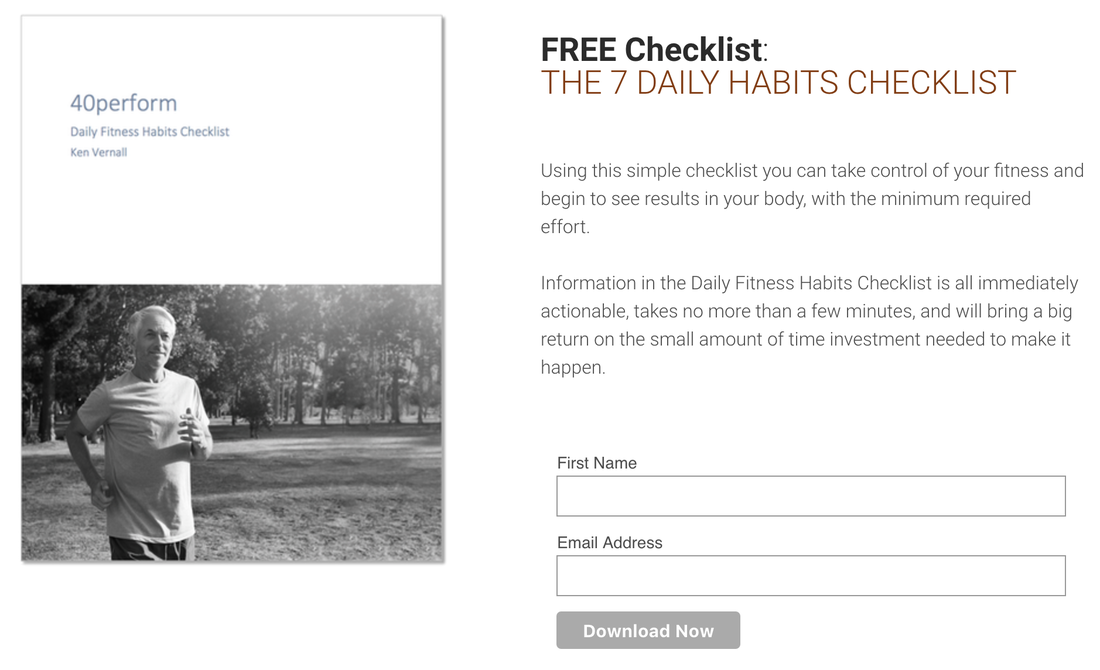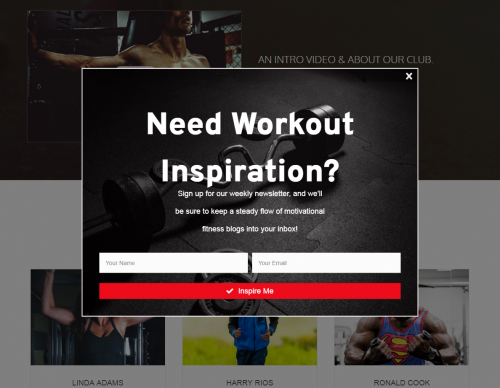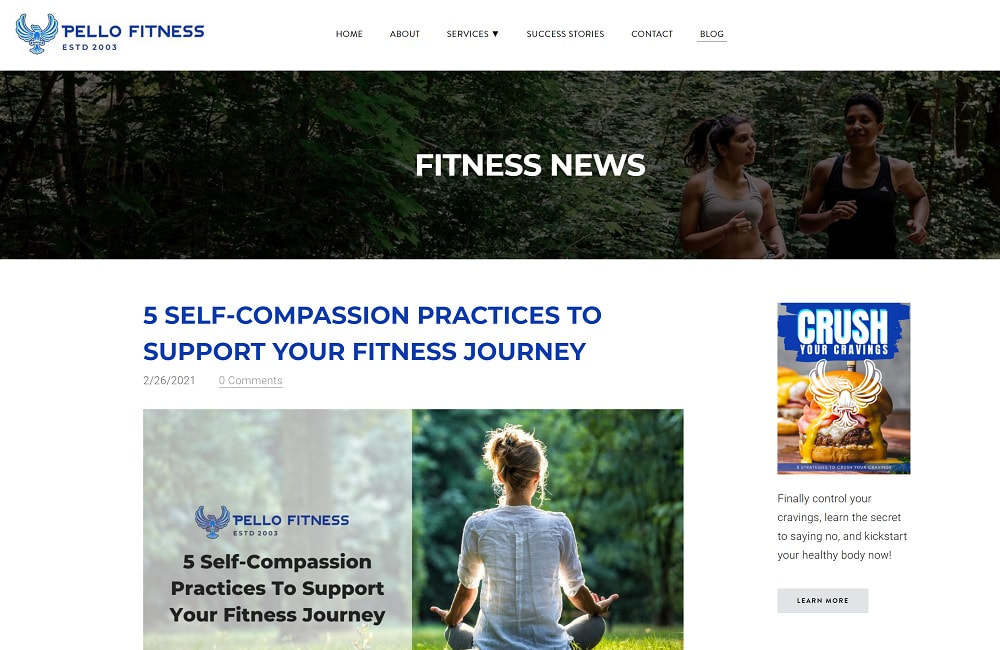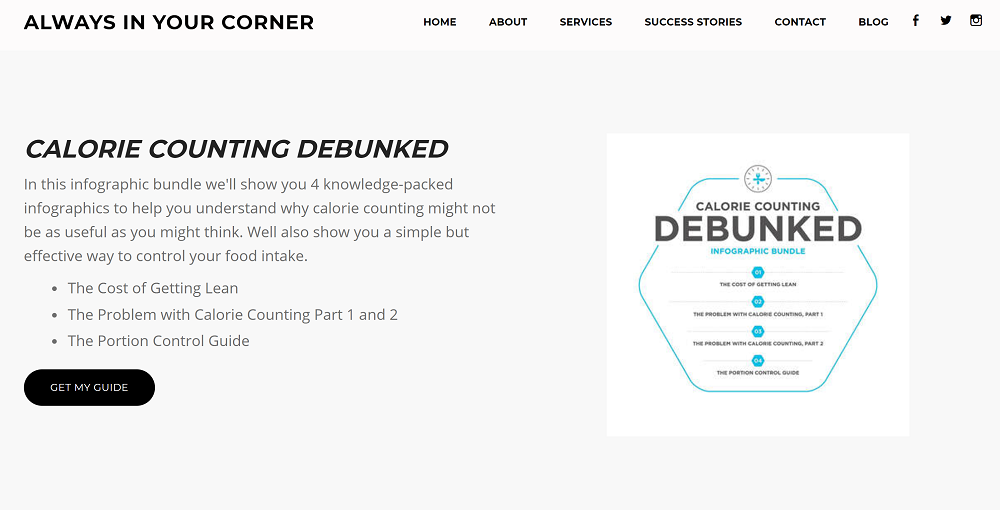Your fitness website is your business brand online. Making all decisions around the website will certainly be based on your integrity as a fitness professional. You’ll recognise taking visitors from your fitness website and nurturing them through your email marketing is one of the most effective ways to generate warm leads.
But you may find yourself conflicted about adding any kind of pop up to your personal trainer website. Especially if you remember your own frustration in those early days of the internet when you’d get hit with annoying pop-up ads. Integrating email marketing with your personal trainer website can be done effectively and ethically.
How To Integrate Email Marketing With Your Fitness Website
Your email list, as organised through an email service provider like Mail Chimp, ActiveCampaign or Mailerlite, is a list you own. Personal trainers like to use email marketing because they have more scope to get their message in front of a warm audience than they do on social media.
Using your personal trainer website to give a useful lead magnet, and then nurture your lead through regular and valuable email campaigns is an effective way to boost lead generation.
Using your personal trainer website to give a useful lead magnet, and then nurture your lead through regular and valuable email campaigns is an effective way to boost lead generation.
1. Inline Forms
Inline forms are the most common way to get a visitor from your personal trainer website and onto your email marketing list. These are the forms embedded into the webpage itself. You can place them on any page, and use a different call to action on each form. For example, the call to action on a blog post might be different from the one you use on the inline form from your service pages.
One of the biggest benefits of these inline forms is that they seem like a natural part of the webpage because they’re displayed at all times.
One of the biggest benefits of these inline forms is that they seem like a natural part of the webpage because they’re displayed at all times.
2. Pop-Ups
There are a range of pop-ups that can be triggered in response to something the visitor has done. They aren’t on the page all the time, which could be a drawback if someone is looking to join your email list as the reason they’re on your fitness website in the first place. Pop-ups have the benefit of keeping the page looking clean and de-cluttered, and that improves the user experience. There are several different styles of pop-ups.
Page entrance pop-ups appear as soon as the visitor clicks onto the page. From a user experience perspective, they can feel intrusive and irritating.
Page scroll pop-ups are used when a visitor scrolls down to a set point on the page they’re on. These are powerful ways to use a call to action in long-form content such as blog posts that don’t involve cluttering the text itself.
Time on page pop-ups will be deployed when a visitor has simply been on your page for an allotted period of time. They’re reasonably effective because time-on-page is a good indicator of how interested and engaged your visitor is with your content.
An exit intent pop up is a final push to collect your visitor’s attention before they leave your site. They’re triggered when someone scrolls towards the top of the page they’re on to close the window or leave to go somewhere else. They’re a last-ditch attempt to grab info, and from a user experience perspective, they can be a little irritating.
3. Blog Sidebar
The blog sidebar integration can be used in one of two ways. Either the option to join the mailing list is there all the time, or it can be used after a user has scrolled down to a set length in your blog content. It might be a congruent call to action to suggest that someone enters their email address to get the latest blog content emailed straight to them.
This could be effective because it gives the user something they are interested in (your blog content) in a way that is less effort for them. This would be perfect if someone is a regular reader of your content.
4. Button Click CTAs
Element interaction pop-ups appear when the visitor hovers over or clicks on a particular element on the page, such as clicking a button. These are highly effective because the user has taken action with the intent to get a particular result, and so these convert well.
Summing Up
Email marketing is one of the biggest return on investment tasks you could be doing inside your fitness business. Integrating your email list with your personal trainer website is a way to deliver a free lead magnet to your audience that they would use, and find valuable. Thereafter it’s a great way to build a relationship with your audience, showing up regularly and consistently. Through email, you can become your audience’s go-to trusted source of health and fitness-related content - without having to battle the ever-changing social media algorithm. If you approach your email list from the perspective of building a trusted relationship, rather than constantly trying to sell to people, you will slowly grow your audience. When they are ready to invest in a personal trainer, you will be their immediate choice because you’ll have already given them so much help.












